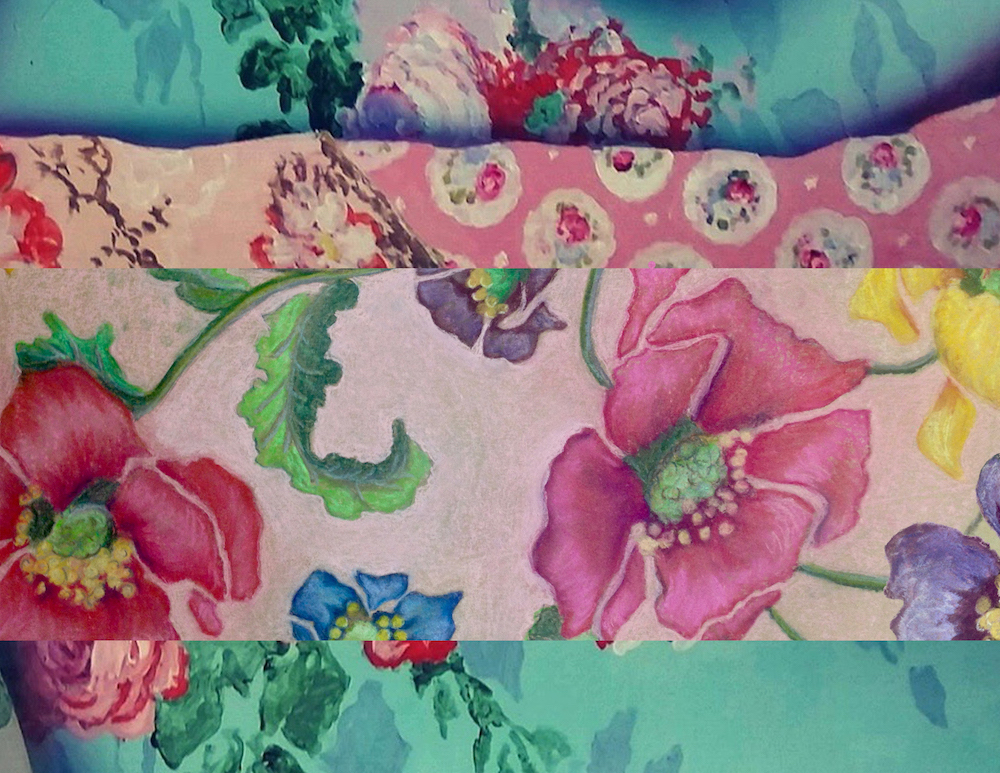#016
The Interview:
Still translating, always challenging
Written by Emma-Kate Wilson
Images Courtesy of the artists

Clark and Guthleben’s exhibition, Interior Motives, has recently come to an end, but both can be found still working on new projects: Jodi at her blog jodiclark.wordpress.com, and Jane on her Facebook.
How did the exhibition come about?
JG: Jodi and I were studio buddies at UNSW Art and Design and talked a lot about our work during our studies. We applied for the 107 show at the start of our Honours year, not really knowing how our work would evolve. But we knew that there were enough common threads in our work, and we think similarly about things, so we were confident our work would end up reflecting time spent together and shared influences in the studio.
For Guthleben: What made you decide to reflect on the self image and why did you use collage for this process?
JG: Wallpaper is a key element in both our work, and I use it for its many hidden meanings. It’s used to paper over cracks; it’s reproducible, superficial and decorative – just like a selfie or a profile picture. The figures in my paintings appear to be posing for the viewer and putting on a public face. The flatness of the collaged shapes and patterns mean that the characters lose their individuality and become anybody. I have given the paintings titles such as Margaret or Ben, and these become a factor in reading the work or giving them identities. Many people think the male figures are Donald Trump. Only one of them is.
For Clark: Your work draws on the distinction between what’s real and what’s not, blurring the lines between a detailed painted background and unfinished fore-figures. How did you come to this process? Did using raw materials influence you?
JC: I think of it as the line between the different categories and identities we’re placed in, more than what’s real and not real. My hybrids defy those categories. I was really influenced during my Honours year by reading Judith Butler, who writes about the “performance” of gender and the idea of drag as an exaggerated performance. I’ve said that my figures are “dragging” the human but maybe as you said they’re also “dragging” the real.
Raw materials have always influenced my work; I have a thing for paper rather than canvas; moving on to wood feels like a natural progression. I have recently begun experimenting with larger-scale works, which has been really liberating for me and I love the way the charcoal feels/moves against the MDF while making my drawings.
Both of your work uses an animosity. Jodi, you use animal faces to conceal identities, whilst Jane your work is void of any faces. Was this a conscious choice?
JG: That’s interesting – I hadn’t thought of it in that way. I was really commenting on how the public face of a house, as in its decor, compares to the public face of an individual. Wallpaper is decoration to a house, as filters, makeup and clothing are decoration to a person. It’s superficial and somewhere behind it is reality.
JC: I don’t know that my animal faces are there to conceal identities so much as to challenge how we are identified. Society places us in certain categories depending on how we look, whether we are male or female. My work is about messing with those categories and showing that we don’t all fit into them (and nor should we have to).
Do you feel being female plays into your creative process and how you choose to exhibit your work?
JG: I have no experience of the alternative! All I can say is that I aim to make the work that is meaningful and genuine to me. If my gender influences this then that’s great. Of course I have a female viewpoint, but it is my starting point rather than being the protagonist in my work.
JC: Being a female plays into my whole life experience; how I’ve been treated by others, what’s been expected of me, ways I’ve defied those expectations or chafed under them…so yeah, I don’t know anything different, but I know that my art is shaped by those experiences and by wanting to complicate people’s pigeonholed expectations of females and “female artists”.
There is a ‘domestic’ element with the decorative, repetitive patterns associated with wallpaper, tying in the ‘home’. Does the idea of the traditional ‘domestic’ roles influence the process as well?
JG: OMG yes. Repetition repetition repetition. Get me out of here. It’s amusing I would use wallpaper as I feel I am chained to domestic duties, being a parent. Perhaps your earlier question is very insightful after all. The wallpaper is proxy for the four walls of the home, and keeping up with the Joneses. But while it reflects this, it is also about capitalist production, and how this pervades every aspect of our lives.
JC: Sort of, because the traditional domestic roles are part and parcel of how we are seen as women and the expectations that people have of us. The wallpaper to me is what ‘drags’ the normative society – I’m using these highly stylised, decorative, repetitive patterns to show that that’s what we’re supposed to be and fit into as well. The hybrids are the “other”, the foil, the breaking out from that – the defiance of the patterning, or the norm.
